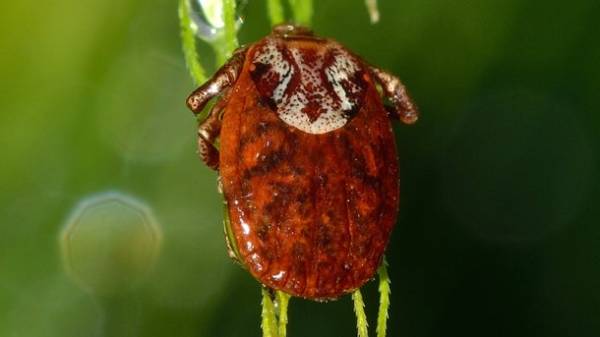
Mid-April is the time when ticks go hunting, because the warm humid weather. And now they are hungry: hungry for the winter. Besides, the parasites in the midst of mating season. Their invasion occurs annually, and experts from time to time give a wide array of tips. Because, apparently, white spots in the national clieveden should not be.
However, has formed a lot of myths about these blood-suckers and against it. They debunked Pavel Dyachenko, senior research fellow at the Department of neuroinfections, Institute of epidemiology and infectious diseases them. L. V. hromashevsky, and Tatiana Maikova, a neurologist.
SCIENCE FICTION
Regarding the control of ticks there are many incorrect and even harmful advice. Here are the main ones.
- STAY AWAY FROM TREES
Of course, “bloodsuckers” and roam among their branches. But their “Dorm” are trees, and grass or low-growing shrubs with a height of 40-60 cm And since mites are waiting for their prey often have echogenic trails, you become their victim you are not on a picnic under the oak, and in city yards, on the trails along the grass and bushes.
- INSPECT PLACES OF POSSIBLE BITES EVERY 1-1. 5 HOURS
To get to the bite “krovosisi” maybe even 20 minutes if favorite places would be nearby. And because it is not only armpits and groin, and head, the area behind the ears and on the neck, then jump off grass, the tick can, when you sat down to admire a flower, to pluck a berry or to look at the shoes: “not whether crawling on me a parasite?” Therefore to examine myself and fellow travellers in the Park and in the forest needed every 15-20 minutes, and again upon arrival home: the clothes, the whole body stripped naked.
- DON’T BE AFRAID OF THE TICK, DRAWN OUT IMMEDIATELY AFTER THE BITE
People far from medicine, believe that the longer a parasite spent within the body of the victim, the greater the probability of infection and the extent of the infection. In fact, the infection of the tick (if its carrier) passes the man by the bite. But pulling it really need as quickly as possible, and as quickly to carry on the analysis in the nearest regional sanitation center or a private lab (in the emergency room diagnosis is not carried out). There will determine the type of infection. And kinds of diseases from the bite — more than 20. The most common in our area, Lyme disease and encephalitis. And here, Yes: rapid identification and initiation of treatment reduces the likelihood of complications from infections.
- EXPEL THE PARASITE FAT
Yes, in the absence of oxygen (when lubricating any oil) the parasite will be forced to leave the bitten person volunteer force. But he did it no earlier than 20 minutes, often 30. However, as already mentioned, the delay in diagnosis increases the risk of complications. And pull slippery from the oil of the parasite will be difficult, and often impossible.
- DON’T GO TO THE DOCTOR, IF THE BITE HAS NOT CHANGED COLOR
Yes, it is red only if the tick was infected. For example, when infected borellii (and on average, they have 60% of mites) there is a ring-shaped redness. But this happens only after 1-3 weeks. Moreover, not always, but only in 70% of cases. And related signs — cold feelings (fever, weakness and body aches) — may never appear. Because the doctor in any case have to go. In addition, 3-7 days after a bite it is better to pass a General analysis of blood: low level of hemoglobin increased white blood cell count and ESR (erythrocyte sedimentation rate) is almost 100% indicates an infection. If for some reason you have not had a diagnosis within a specified time, hurry to the lab in 3-4 weeks: when infection in the blood have antibodies of class M (saying that the infection in the acute phase). G antibodies can be detected 3-4 months: their presence says that contact infection was the disease became chronic.
AS NOT TO GIVE THE PARASITE A CHANCE
- DRESS LIKE A COCOON
Bare while walking in the forest and the Park can only be face and hand. You should be clothing with long sleeves, pants tucked into socks, head — piece. So mite be hard to get to body, in any case, quickly.
- THINGS SHOULD BE LIGHTER
Then the parasite will be easier to notice on approaches to the body.
- INSPECT EACH OTHER AS OFTEN AS POSSIBLE
To find a loophole in the clothes and choose the best site of the bite, the tick an average of 60 minutes, sometimes 1.5 hours. But if you had to bend over or squat, inspect yourself and companions 15 minutes after that.
- GET IN THE CONIFEROUS FOREST
The probability of living ticks at times less than in the deciduous.
- DON’T GO ANYWHERE IN THE LONG GRASS
On plants less than 40 cm, as a rule, parasites do not sit. If the destination is no other way, only through the high grass, try to do it quickly. And if the grass grows in the trail, make sure you do not touch her feet.
IF STILL ATTACKED
1. WASH YOUR HANDS WITH SOAP AND WATER
This will reduce the probability of entry of microbes that also could get on the bite.
2. TWIST IT LIKE A SCREW
Tweezers, your fingers or a noose around the neck of the tick from durable threads will bring him closer to his mouth, and no sudden movements scroll the parasite in any of them, but constantly the same direction (as when removing the screw — up at the same time), gently and slightly shaking.
3. COAT THE BITE WITH ANTISEPTIC
For example, vodka, brilliant green, iodine or alcohol.
4. TAKE THE TICK FOR ANALYSIS WITHIN TWO DAYS MAX
As early as possible take it for analysis to the district sanitation center or to a private laboratory to determine whether the mite is contagious and what. The parasite to transport immediately, carefully, so as not to crush, put in a jar: to diagnose flattened mite impossible.
5. GO TO THE INFECTIOUS DISEASE
Also not later than two days after the bite. Even if the tick you crushed. Although blood has not yet did not show the appointment of vitamins, and antibiotics (which ones, can be solved only by a specialist) will bring less harm than a possible delay to an untreated infection.







